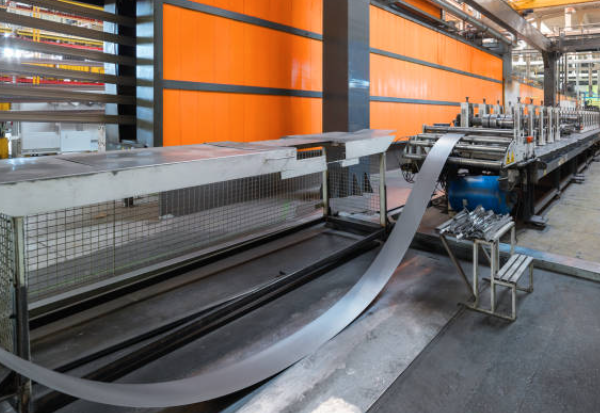
Posted on Wednesday, October 9, 2024
The roofing industry is experiencing a significant uptick in demand for metal drip edges, essential components that protect buildings from water damage and enhance the aesthetic appeal of roofs. To keep pace with this growing demand, manufacturers are increasingly turning to roll forming technology, which offers scalability, efficiency, and precision in production.
Roll forming is a highly efficient manufacturing process that involves feeding a continuous strip of metal through a series of rollers to shape it into a specific profile. This process is particularly beneficial for producing metal drip edges, which require consistent dimensions and high-quality finishes. Here’s how roll forming technology supports manufacturers in scaling production:
As the roofing industry continues to evolve, the demand for durable, aesthetically pleasing metal drip edges will only grow. Roll forming technology enables manufacturers to respond quickly to market changes, scaling their production capabilities to meet the increasing needs of contractors and builders.
Roll forming technology is transforming the way metal drip edge manufacturers operate, enabling them to scale production efficiently and meet the growing demands of the roofing industry. By embracing this innovative manufacturing process, companies can enhance their production capabilities, improve product quality, and maintain a competitive edge in an increasingly dynamic market. As demand for metal drip edges continues to rise, the advantages of roll forming will be crucial for manufacturers looking to thrive in this evolving landscape.

Most Popular Roll Forming Machines in the United Kingdom
Posted on Thursday, December 11, 2025
This blog breaks down the five most in-demand roll forming machines in the UK

Can I Finance a Roll Forming Machine?
Posted on Thursday, December 11, 2025
Financing a roll forming machine is easier than most buyers think. Here’s how leases, loans, and payment plans make production affordable.

Roll Forming Machines for Sale in the UK: What Buyers Need to Know Before Purchasing
Posted on Thursday, December 11, 2025
This complete guide explains everything UK buyers must know before purchasing, including machine types, voltage requirements, CE/UKCA compliance

Roll Forming Machines for Sale in the USA: What Buyers Need to Know Before Purchasing
Posted on Wednesday, December 10, 2025
This guide explains everything U.S. buyers need to know before purchasing a roll forming machine, including machine types, pricing, voltage
Copyright 2026 © Machine Matcher.